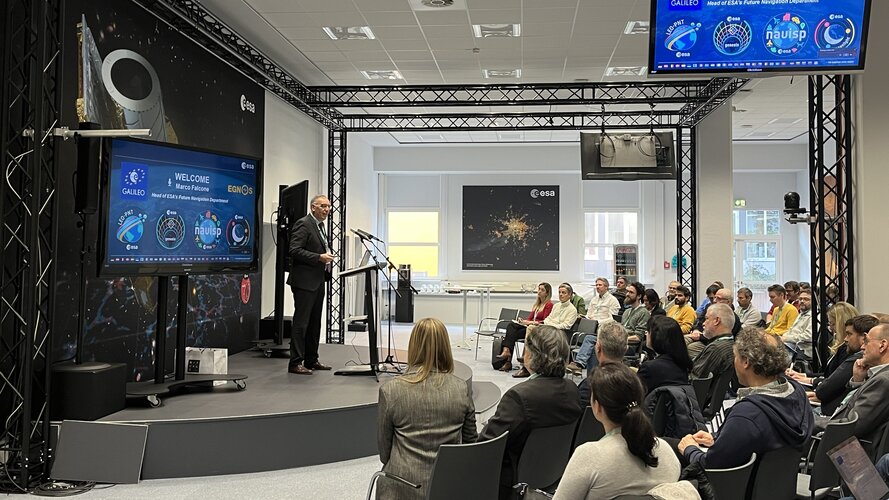
The project team shared a proposal for the involvement of the scientific community in this mission, with working groups and an initial structure for the Genesis Science Exploitation Team (GSET). The GSET’s role is to advise the project team on mission development, qualification, calibration and operations, and compliance assessment to the mission objectives, as well as to exploit the mission’s data in the future.
The Genesis satellite will act as a geodetic (Earth-measuring) observatory in space that will carry instruments for the main geodetic techniques: very-long-baseline interferometry, satellite laser ranging,DORIS and satellite navigation. An ultra-stable oscillator on board will ensure the instruments are synchronised.
The project team took the opportunity to present the Genesis processing, archiving and distribution centre that will process mission data, generate data products, disseminate and archive them, with participation from the ESOC Navigation Support Office and ESAC GNSS Science Support Centre.
Genesis is approaching its official kick-off later this month, marked by the award of contracts to European industry. “The mission will be implemented in a fast pace, with a vision to provide the best outcome for mission exploitation within the programmatic boundaries,” said Genesis Project Manager Sara Gidlund. “This science workshop sets the scene for what we need to do in the coming years and establishes from the very beginning a good interface between ESA and the scientific community.”
Head of Future Navigation Department Marco Falcone added: “We have been excited about Genesis and its huge potential since it was approved at the ESA Ministerial Council in November 2022. Genesis is a mission for the world, and ESA is proud to contribute towards the definition of the International Terrestrial Reference Frame down to millimetre accuracy.”



